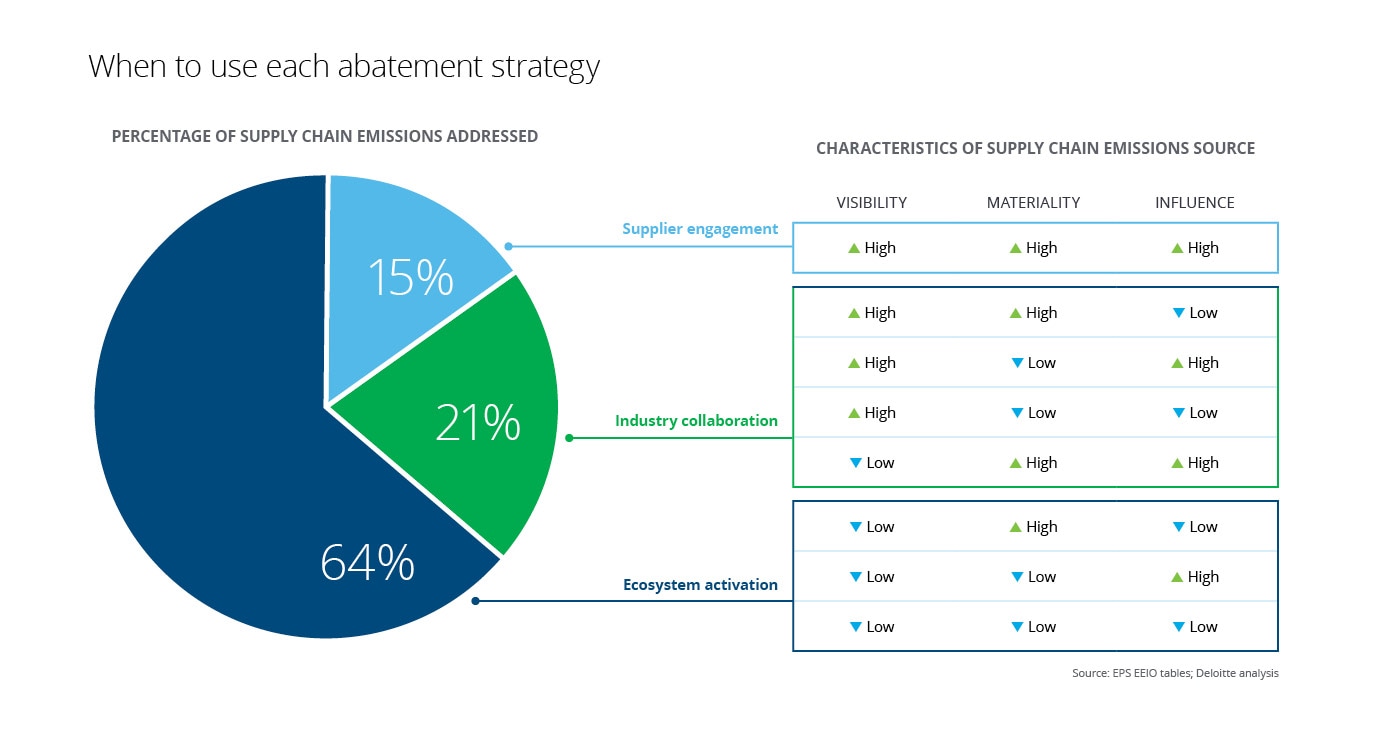Reducing Supply Chain Emissions has been saved

Article
Reducing Supply Chain Emissions
Your abatement strategies can account for the visibility, materiality, and influence you have over your upstream Scope 3
Hitting net-zero is often subject to a vexing conundrum: the largest source of most companies’ emissions is their upstream Scope 3, or supply chain emissions, yet these are typically the most difficult to identify and abate. How can companies reduce what they cannot find or control? Start by adopting a new perspective on the ultimate source of your supply chain emissions, and tailoring your abatement strategy to the defining characteristics of each source.
Abating Scope 3 emissions
Successfully implementing an upstream Scope 3 (supply chain) emissions reduction strategy is a critical component of a company's journey toward achieving a more sustainable future. Properly applied, a carefully constructed portfolio of supplier engagement, industry collaboration, and ecosystem activation can put your company on the path to achieving its net-zero ambition.
Supplier engagement
Today, many companies focus primarily on supplier engagement, a term that captures a wide range of activities. It can be as passive as encouraging and supporting suppliers’ adoption of their own net-zero commitments, or as active as co-investing with suppliers in abatement technologies. It can be highly effective, but it also has limited applicability, often best-suited for as little as 15% of the supply chain total. The key to avoiding wasted effort is identifying where supplier engagement is effective, and where it’s not.
Industry collaboration
Another way some organizations are supporting decarbonization is through industry collaboration. The automotive sector, for example, is pursuing standardization and inter-operability for electric vehicle (EV) charging infrastructure for both consumer and commercial markets.
Like supplier engagement, part of what makes industry collaboration challenging is that effective interventions are typically highly tailored to the participants’ shared interests and needs, limiting the sources of emissions that can be reduced this way. Picking the most promising targets requires a shared understanding of what matters and why.
Ecosystem activation
Ecosystem activation expands collective action even further. This strategy involves mobilizing a larger and more diverse group of participants around a specific emissions reduction goal. As a result, it tends to require a more standardized solution with far less scope for customization. In this case, success turns on how to find common ground among dozens, even hundreds, of companies with little in common other than a shared desire to cut emissions.

Turning insights into action
Companies of any complexity are often faced with a carbon inventory comprising inputs from thousands–even tens of thousands–of suppliers. This can make the questions of how and when to use each approach to emission reductions seem daunting.
But thanks to how carbon inventories are often created, many companies have an answer at their fingertips. Specifically, companies that use spend-based emission factors to estimate their carbon footprint are relying on the same data and assumptions required to identify and quantify the ultimate sources of their supply chain emissions. This gives them valuable insight into how best to achieve the desired emissions reductions.
Better still, these insights can be combined with well-understood, effective, and innovative carbon market instruments to support net zero.
Best of all, this approach can not only set a single company on the path to net zero, but also the entire global economy.
This report takes a deep dive into the necessary tools and approaches for abating Scope 3 emissions.
Acknowledgments
The author would like to thank Jeffrey Pinsker-Smith and Rajeev Teegavarapu for their invaluable contributions to the data analysis upon which this report is based.
Recommendations
A systems focus for corporate sustainability transformation
Developing a corporate climate action strategy
Tackle Scope 3 emissions for supplier sustainability
Procurement’s role in reaching ESG goals


